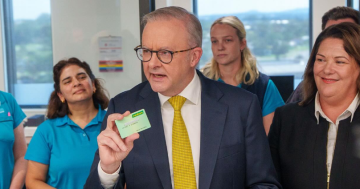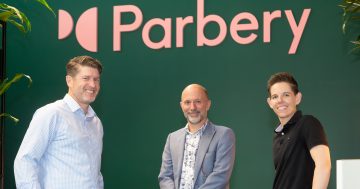Ben Hurley* says a recent roundtable saw insurers and super funds meet with mental health experts to discuss the role they can play in addressing the looming global public health threats of loneliness and social isolation.
 The strange and unfamiliar term ‘social distancing’ quickly became ubiquitous in the early months of 2020, as the direct impact of Covid-19 forced to the sidelines the basic human need to be socially connected.
The strange and unfamiliar term ‘social distancing’ quickly became ubiquitous in the early months of 2020, as the direct impact of Covid-19 forced to the sidelines the basic human need to be socially connected.
Now, as individuals are recommencing face-to-face interactions and flexing their atrophied social muscles, numerous organisations are recognising the critical role high-quality social connectedness plays in our physical and mental health and wellbeing.
In a roundtable titled ‘How to improve our social connectedness post-pandemic,’ hosted by Investment Magazine and AIA Australia, insurers and super funds discussed with mental health experts the role they now can play in addressing the looming global public health threats of loneliness and social isolation.
Pressure on living costs
In opening remarks, Colin Tate, executive chair of Conexus Financial, noted dozens of Australians are still dying daily from Covid-19, and vulnerable individuals are re-developing their social skills at a time that pressure on living costs such as rents and mortgages is increasing.
“The effect of social isolation on mortality is extraordinarily comparable to smoking, and the risk factors around obesity and physical inactivity,” Tate said.
“I think [the term ‘post-pandemic’] is a little bit optimistic still, but certainly as we move through what feels like the tail or maybe moving into a more normalised environment, certainly social relationships and physical relationships are at least recommencing.”
A key theme of the discussion was the distinction between social isolation and loneliness, an area rife with misconceptions, according to Dr Michelle Lim, clinical psychologist and chair of Ending Loneliness Together, a national organisation working to combat chronic loneliness in Australia.
Loneliness is a word that has been misused and trivialised for many years, Lim said, with scientific evidence showing it is not being alone per se that causes distress and future health problems but rather the subjective experience of how a person feels about his or her social isolation and the absence of meaningful social connection.
Conversely, ‘social isolation’ in a physical sense refers to a more objective state of living alone or having fewer people around, and this has its own health risks such as the absence of people to help in the event of an accident or medical emergency at home.
“You might not be alone physically, but if you feel like no one has your back, if you feel like you have no one to turn to or talk to or you have no one who understands you, your health outcomes, mortality risk, morbidity of health disorders, even things like workplace productivity, it all goes down,” Lim said.
Solutions require a holistic understanding
Thinking about loneliness as purely the responsibility of the individual is therefore “a very old school way of thinking,” she said, as loneliness is maintained in part by a person’s cognition, but also by our environment and policies governing the way we live, work and play.
Solutions require a holistic understanding, otherwise we are unlikely to make progress on this issue.
“So we need to think about loneliness in a way that’s a lot more nuanced,” Lim said.
“What I see out there with what most organisations are doing is that they will tell me they are targeting loneliness, but what they’re really doing is just introducing more people in the network.
“But if those people are the ones who discriminate against you, who bully you, who are actually mean to you or don’t accept you, then I don’t see really a point.
“In fact, it makes the problem worse.”
Noel Lacey, head of insurance at Cbus Super, said the fund deals with workers in the construction industry which has a notoriously high rate of suicide.
The distinction between being alone and feeling lonely is real in this industry for people facing mental health issues, Lacey said.
“We’ve got lots of those people where they may be surrounded by people… but not sharing that issue.”
There has been a drop in death claims during the pandemic, including reduced suicide rates, Lacey said.
But the end of government support, combined with rising interest rates and the lasting social impact of Covid-19, may change this by adding greater financial pressure into the mix.
The challenge of working from home
Every Australian company is still on “training wheels” around how to manage the hybrid situation of allowing work-from-home flexibility while at the same time creating face-to-face interaction, said Margo Lydon, the 12-year CEO of SuperFriend – an organisation focused on improving workplace mental health through super funds and their networks – speaking on her last day in the job.
SuperFriend’s annual national survey, the Indicators of a Thriving Workplace Report, has workplace connectedness as one of its key five domains, pointing to the importance of quality relationships to mental health.
“What we are seeing with organisations that are doing really well, is bringing some intentionality as to why to be in the office together, why we need this connectedness, why we need to come together,” Lydon said.
“So, thinking through the lens of rather than x number of days, [asking] why do we need people in the room together?
“And build that across the organisation from the ground up.”
Damien Mu, CEO and managing director of Australia and New Zealand for AIA, said he is a proponent of digital health solutions and AIA offers a number including the AIA Vitality toolkit.
But the limitations of digital connection can be seen starkly in the shift towards working from home that has taken place since the pandemic.
“From an employer perspective, it has been very challenging because we’re trying to support what people are saying, their desire to have very flexible working arrangements,” Mu said.
“But at the same time, I’m observing and seeing the impact that that is having on the connections that they’re making with the organisation and with each other.”
Working from home has advantages and can in some cases enable people to spend more time with family and friends, he said, but the connection to the purpose of the organisation and to the team at work is not as strong.
Organic relationships
Tate shared the experience at his own workplace where senior people may feel they do not need to be with others to get their work done but can forget there are newer young people who need to learn the ropes and benefit from knowledge transfer.
These anecdotes are consistent with what Lim has seen in remote working data, but results vary by age groups.
Younger people do need face-to-face mentorship and desire connection, and this can be hard to do within structured tech platforms, as the most beneficial relationships often form organically.
“It’s those little minute social interactions, you know, one day I might bump into Margo at the water cooler and just say: ‘Hi Margo, what’s going on?’
“And the next time if I see you again Margo, I might actually build on that conversation, and that was basically gone during Covid.
“We don’t have those kinds of minute social interactions with our colleagues anymore.”
People don’t always realise how reliant they are on these kinds of interactions, she said, even introverts like herself.
Organisations are increasingly moving toward hybrid models that offer a mix of both work-from-home and office-based work, she said, but getting this right can be a challenge.
Alison Tanswell, head of customer strategy at CSC Super, the super fund for Commonwealth public servants and the military, said it was important for workplace leaders to be aware those at home may be missing out on the conversation.
“If you’re at home and everybody else is in the room and having private conversations, that’s where you start feeling lonely,” Tanswell said.
“So [for leaders] it’s about… making sure that people are included in the conversations and really just having to manage that in person and online.”
This can involve setting rules around how meetings are run, being conscious of inclusion and making sure to draw people into the conversation, she said.
Workplaces can consider making it a rule virtual participants leave their camera on unless there is a strong reason not to, she said.
The role of technology
Much has been made of the role of social media and other relatively new changes brought about by the digital revolution.
But while the impact is real, technology shouldn’t be over-simplified as purely fracturing relationships, Lim said, noting that during the pandemic, the digital realm increased our ability to meet each other more often.
Research shows technology is viewed very differently across age groups, with young people not seeing it as much of a threat, while older people are more concerned, she said.
Social media is built in a way that favours quantity over quality, and this actually suits younger people.
“Young people favour quantity of relationships over quality, but as we age, if you guys just reflect on your own friendships, our friendship network actually becomes a lot smaller, but perhaps the relationships that we keep within those smaller networks are of higher quality,” Lim said.
Digital platforms can be effective in engaging young people on mental health issues when they may feel less comfortable seeing a clinician face-to-face, at least in the beginning.
Meaningful social connection
Alison McLean, general manager of shared value partnerships at AIA Australia, is an occupational therapist who has studied the factors that impact disability outcomes.
One of the biggest predictors was meaningful social connection, she said, and the number of people a person can call on if something goes wrong.
As a behavioural scientist, she found community and peer support is what really drives engagement with the growing array of health technology solutions directed at behavioural change–and ultimately good outcomes.
Loneliness isn’t just about how many people are around you, but the question of how meaningful interactions are, she said.
“One exciting initiative we’re launching at the end of May is looking at how organisations can support their staff transitioning back to the office after working from home for an extended period of time,” McLean said.
“We’re partnering with leading behavioural scientists from the University of Chicago Booth School of Business to examine connections in the workplace and will share our findings to help other organisations facing the same transition.”
Social connection is a way to motivate better health management, and there is a virtuous loop between the two, said Hugo Rourke, CEO and Co-Founder of Perx Health, a digital health company based in Sydney that uses behavioural science to drive health engagement.
Perx assists people suffering from chronic disease who have been told by their doctors during the pandemic to stay at home, Rourke said.
Recipients of workers compensation also deal with this, having suddenly had their workplace connections taken away due to a traumatic injury.
“They’ve got a physical recovery journey, no doubt, but they’ve also got to rebuild their social lives and they may never return to that workplace,” Rourke said.
People with stigmatised infectious diseases like HIV or Hepatitis C can also be relatively closed populations vulnerable to loneliness and isolation, Rourke said.
Quality versus quantity of social connections is an important distinction that needs to be more widely understood, he added.
“We can all have lots of touch points with, you know, the local barista at your cafe, but it’s quite remarkable what it can be like to get two people who have similar lived experiences connecting, and what that does for their loneliness, but also for their broader health,” Rourke said.
Non-clinical interventions
Insurers have lifted their game on mental health claims in recent years, shifting away from a “one-size-type-product” to offering greater support, Mu said, while working with parties like the employer, fund and fund administrator to make the claims process smoother.
An important discussion is emerging about non-clinical interventions to help people achieve more meaningful participation in life, Mu said, with super funds and insurers having a clear role to play.
“Now, it could be a book club.
“It could be a range of community supports that are available.
“And… this isn’t just about throwing people in a room and expecting magic to happen.
“This is a thing of high quality, and people being supported.”
Cbus has a “claims assist” function that has been in place for four years which is involved with support, empathy and expectation setting, Lacey said.
The fund contacts every claimant and runs through the process, asking what they expect from it, and running through what it will look like, who they will deal with, what those people will expect, what they will be looking for and why.
“And then if anything doesn’t go the way that it should, then we’re the point of escalation for them and… whilst they can, they [usually] don’t think they need to engage a solicitor or pay other funds.”
This has worked well, particularly for people on mental health claims who are vulnerable and anxious.
Awareness has a way to go
But participants agreed public and private awareness has a way to go on the importance of social connection.
Lydon cited 2017 data that shows one in four households are lone households, and while this doesn’t equate directly to loneliness, it is a factor that increases risk.
Government policy needs to play a role, she said.
While JobKeeper during the pandemic was a lifesaver in the area of mental health, policies in the area of connection had fallen short.
“[Jobkeeper] has absolutely saved lives, but it took the government months to actually introduce a bubble for a single person, living on their own, to be able to legally have somebody they could connect with,” Lydon said.
“And those are the sorts of policy and awareness levels that I think feed in to how we’re sitting today and what we’re going to be sitting in and feeling tomorrow in our communities, as loneliness becomes a much more prevalent conversation and how we can actually address that.”
*Ben Hurley is a journalist and editor with more than a decade of experience in the industry.
This article first appeared at investmentmagazine.com.au.











